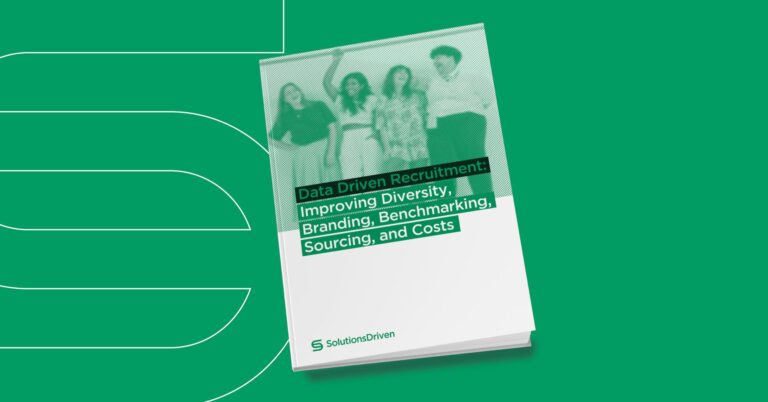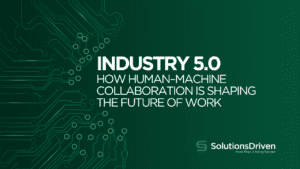The Six Forces That Will Reshape Hiring by 2028. Why...
Read MoreHow Data Driven Recruitment Can Reduce Reactive Hiring

To be the first to hear about our latest blogs, whitepaper releases, hiring enablement podcast episodes and get exclusive event invites, join our Exclusive Hiring Enablement Community.
Hiring right has never been more important. But businesses have less resources than ever before. Can data driven recruitment fill the gaps?
We have lots of conversations with Talent teams every month. And one problem that comes up time and again is that hiring teams feel they’re hiring reactively. Partly due to the fast-paced nature of their markets, partly because of the uncertainty job seekers are feeling, and partly due to their own teams’ changing situations.
It’s holding them back from planning ahead effectively, and making recruitment more difficult than it needs to be.
But like many other industries, recruitment is beginning to wake up to the value of data. Recruiters and hiring managers are discovering that analysing past data, and information on their markets and talent pools helps them overcome reactive hiring problems and plan ahead for more strategic recruitment.
What is Data Driven Recruitment?
Companies want talent teams to do more, and it’s harder to plan ahead or spot gaps in their recruitment processes. So TAs are often on the back foot. A key member of the team leaves or speed is important because the company or market has changed rapidly.

But, by using either their own internal data or bringing in businesses who have a read on the market, smart companies are managing to get ahead.
Using that data to inform your recruitment strategy going forwards is data-driven recruitment.
When the company knows the market layout specific roles or locations, they can plan ahead to fill positions. They can also use data to spot gaps in their internal operations and behave pro-actively, not reactively.
Rather than constantly start from a position of ignorance, companies have the information at their fingertips to drive their recruitment strategy and make important decisions, knowing they have all the facts.
What is Reactive Hiring?
Often, you just need to get someone in the role as soon as possible. Perhaps you’re scaling up quickly or someone has left the company and the position needs filled immediately.

Having a pipeline of warm candidates or an overview for particular talent is pro-active hiring.
Reactive hiring is when hires are made without a plan in place or market research conducted, and started because someone has left or a position has become unexpectedly vacant.
One of our SaaS clients found themselves in this position last year. Their operations had scaled hugely and they needed a senior executive to take financial advantage of the growth. They were a new business, a startup, so they just didn’t have the needed planning in place. (Nor did they know a global pandemic was about to come along and totally change how they operated!)
They’d tried to hire for the position themselves but were continually running into roadblocks. They needed intelligence on the landscape of that position in their field to get the right hire in place, first time.
What Problems Do Reactive Hiring Cause?
One of the main problems with reactive hiring is not getting the right candidate. You naturally spend less time on rushed hires. If you’re already stretched and trying to fill the position quickly, you could hire a candidate that’s “good enough”, rather than the best possible person for the role.
You spot issues too late. You can spot pitfalls early on in a considered hiring process with proper steps and processes. In depth interviewing can ensure candidates skills are what you need and psychometric tests allow you to figure out if the person will add to your team and how they work. Hiring managers skips steps in a rushed process and underlying issues aren’t discovered until someone is already in situ.

High attrition. Hiring reactively means you’re less likely to find the exact fit, which further down the line, leads to higher attrition rates within your organisation. After all 48% of employees leave a job because it doesn’t fit their expectations. High attrition rates can cause issues like:
-
- Poor employee motivation
-
- Decreased innovation
-
- A siloed environment
-
- Difficulties in decision making
-
- Decreases in revenue
Bad candidate experience
You need to engage candidates and give them a great candidate experience – job seekers want to be sold to. They like to feel like you really want them to be part of the organisation.
When you do things methodically in data driven recruitment, you’ll speak to less unqualified candidates and need to let less people down (however gently). There’s also more time to engage and reply to candidates, providing them with feedback and selling the position to them.
All of which help your recruitment budget go further…
Improving Your Opportunities
In a longer, data driven, process, there’s more opportunities to weed out unsuitable candidates earlier or and to provide feedback to good candidates who just didn’t quite make the grade. Creating a better candidate experience.
And candidate experience is important. 38% of people will tell friends and family about a bad recruitment experience – sullying your brand’s name with a bigger pool of people.
What Recruitment Metrics Should You Track in Data Driven Recruiting?
Often, the best way to go about a data driven recruitment process is seeing what’s worked before. Looking back at your past data points on talent acquisition efforts and using it to inform future processes.
Look at your talent sources
Say you’re a SaaS tech company and finding great developers is always an issue.
If your talent acquisition team have tracked things like where you found past candidates, what specific skills your best developers possess, the location your best employees come from, and the top competition to target, that will help you focus on where to start your next search.

Focus on The Key Areas
You can also see where people tend to drop out of an application process or what recruitment channels are most fruitful to help you hone in on successful areas. This can also help improve your candidate experience.
If candidates who come from another company or course tend to leave early on in their employment, or are never promoted, that will help steer you away from those areas.
Look at time-to-hire
Is it longer for searches in a particular location or department? It could be worth considering home-working for remote workers or digging into the skills required for that department.
Consider attrition rates for job roles.
Is a high attrition rate linked to the type of candidate available for those roles or could your EVP actually be the issue? Employer surveys, exit interviews, and regular job chats should help shed some insights.
Employee Surveys
At Solutions Driven, we conduct regular employee surveys to see how our team are feeling. This helps us to lower our own attrition by continually improving the workplace.
But it also helps us attract new candidates by having the historical data on what we’re doing well and what we’re not, and aiming to improve the negatives.
If you don’t already have this information easily accessible for your hiring process, working with an outside company who has recruitment intelligence will allow you to gain access to this information and benefit from their insights.
Want to know more about how you can use analytics and data points to solve recruitment problems?
Download our eBook on Data Driven Recruitment. We’ll discuss how moving to a more data-centric approach can help with diversity, costs, and much more.
Download the book
Workforce Planning: The New Strategic Imperative for Leaders
There’s a growing disconnect between what leaders are saying about AI...
Read MoreDEI In 2025: Why It Still Matters And Where We Go From Here
Diversity, Equity, and Inclusion (DEI) has evolved significantly in recent...
Read MoreIndustry 5.0: How Human-Machine Collaboration is Shaping the Future of Work
Industry 5.0: Why Human–Machine Collaboration Will Redefine the Future of...
Read More



